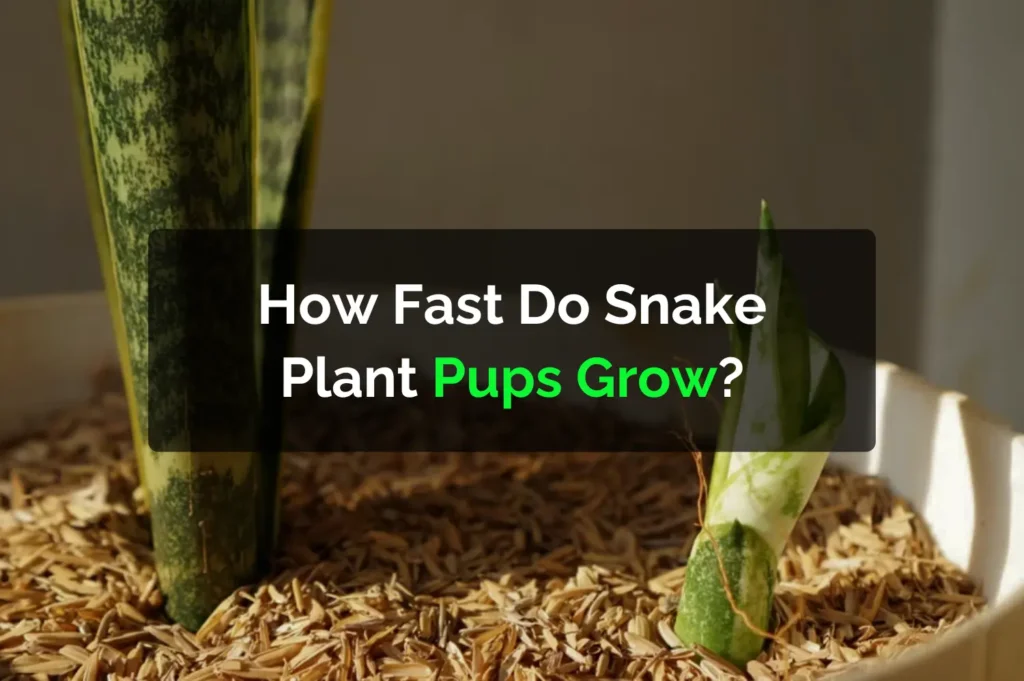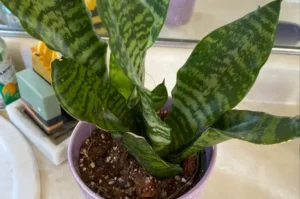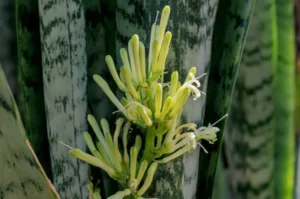Snake plants (Dracaena trifasciata), commonly known as mother-in-law’s tongue, are popular for their resilience and low maintenance. One fascinating aspect of these plants is their ability to produce “pups”, small offshoots that emerge from the base of the mother plant. Understanding how fast these pups grow can help you manage and propagate your snake plant collection effectively.
Understanding Snake Plant Pups
Snake plant pups are new shoots that sprout from the rhizomes, the underground stems of the plant. These pups can develop into independent plants when separated and potted individually. The growth rate of these pups varies based on several environmental and care factors.
Growth Timeline of Snake Plant Pups
The development of snake plant pups is a gradual process. Here’s a general timeline:
- Emergence: Pups typically appear when the mother plant is mature and healthy. This can occur when the plant is around 2 to 3 years old, though some varieties may produce pups earlier or later depending on conditions.
- Initial Growth (First 2-3 Months): Once emerged, pups grow slowly. During this period, they focus on establishing roots and may grow a few inches in height.
- Continued Development (3-6 Months): With proper care, pups can grow 4 to 6 inches tall. They begin to develop more leaves and a stronger root system.
- Maturity (6-12 Months): Pups can reach a height of 8 to 12 inches and are often ready to be separated from the mother plant for independent growth.
It’s important to note that snake plants are generally slow growers, and patience is key when nurturing pups.
Factors Influencing Pup Growth
Several factors can affect the growth rate of snake plant pups:
1. Light Exposure
Bright, indirect sunlight promotes faster growth. While snake plants can tolerate low light, insufficient light can slow down pup development.
2. Watering Practices
Overwatering can lead to root rot, hindering pup growth. It’s best to water the plant only when the soil is completely dry.
3. Soil Quality
Well-draining soil is crucial. A mix designed for succulents or cacti ensures that excess water doesn’t accumulate, protecting the roots.
4. Temperature and Humidity
Snake plants prefer temperatures between 60°F and 85°F (16°C to 29°C). Extreme cold or high humidity can negatively impact growth.
5. Nutrient Availability
Occasional feeding with a balanced, diluted fertilizer during the growing season (spring and summer) can support healthy pup development.
Tips for Encouraging Faster Growth
To help your snake plant pups grow more efficiently:
- Provide Adequate Light: Place the plant near a window with filtered sunlight.
- Maintain Proper Watering: Allow the soil to dry out completely between waterings.
- Use Appropriate Soil: Ensure the potting mix is well-draining.
- Fertilize Sparingly: Feed with a diluted fertilizer during active growth periods.
- Repot When Necessary: If the plant becomes root-bound, consider repotting to provide more space for growth.
When to Separate Snake Plant Pups
Separating pups at the right time ensures their successful growth as independent plants:
- Size and Root Development: Wait until the pup is at least 4 to 6 inches tall and has developed its own roots.
- Seasonal Timing: Spring and summer are ideal for separation, as the plant is in its active growth phase.
- Separation Process:
- Gently remove the plant from its pot.
- Identify the pup and its connection to the mother plant.
- Use a clean, sharp knife to separate the pup, ensuring it has roots attached.
- Allow the cut to dry for a day to prevent rot.
- Plant the pup in a new pot with appropriate soil and water lightly.
Frequently Asked Questions (FAQs)
How often do snake plants produce pups?
Snake plants typically produce pups once they reach maturity, around 2 to 3 years of age. The frequency can vary based on plant health and environmental conditions.
Can I leave the pups attached to the mother plant?
Yes, pups can remain attached and will continue to grow alongside the mother plant. However, separating them allows for more space and resources, promoting healthier growth.
Do all snake plant varieties produce pups at the same rate?
No, different varieties have varying growth rates and pup production timelines. Some may produce pups earlier or more frequently than others.
What should I do if my snake plant isn't producing pups?
Ensure the plant is healthy, receives adequate light, and isn’t overwatered. Sometimes, slight stress, like being slightly root-bound, can encourage pup production.
Is it necessary to use rooting hormone when planting separated pups?
While not essential, using a rooting hormone can promote faster root development and increase the chances of successful propagation.
Conclusion
Snake plant pups offer an excellent opportunity to expand your indoor garden. While their growth is gradual, providing optimal care ensures healthy development. By understanding the factors that influence growth and knowing when and how to separate pups, you can enjoy a thriving collection of snake plants in your home.






